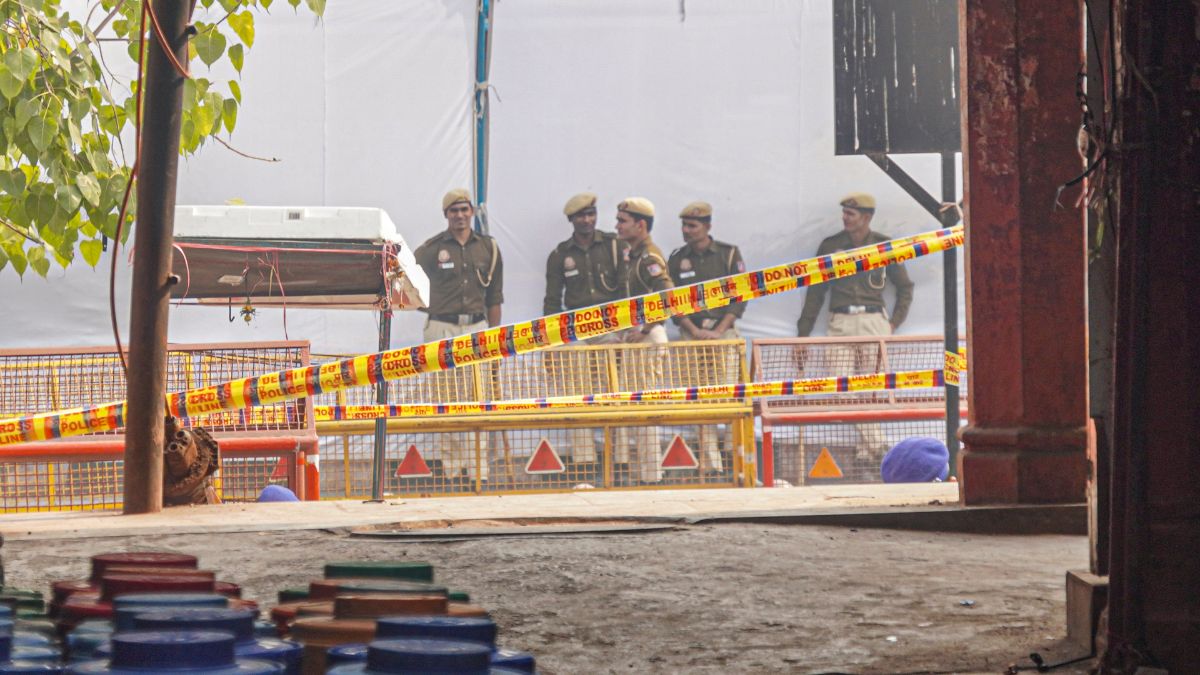As the Delhi blast case continues to unravel, preliminary probe has revealed that military-grade explosives may have been used to trigger the explosion that burst the Hyundai i20 car into flames, killing 13 people near Red Fort.
Sources have told the Times of India that investigating teams have asked forensics whether PETN, semtex or RDX could have been used, based on the nature of damages and deaths. An initial probe into the blast has revealed the use of ammonium nitrate, fuel oil, and explosive detonators.
Forensic teams have gathered around 42 pieces of evidence from the site for laboratory analysis. The items include the i20 car’s tyres, chassis, CNG cylinder, and sections of the bonnet, along with various residues and traces of powder recovered from the scene. The findings are expected to help identify the types of high-intensity materials used in the explosion.
The blast in the national capital has put most parts of India on high alert, with police ramping up inspection of cars leaving and entering big cities. The incident is being investigated by multiple agencies, including the National Investigation Agency (NIA) and National Security Guard (NSG).
What are these military-grade explosives?
Pentaerythritol tetranitrate (PETN), a key component of Semtex, is chemically related to nitroglycerin. Regarded as one of the most powerful explosives, its colourless crystalline form makes it hard to detect, a trait that has led to its use by terrorist groups.
Only a very small amount of PETN is enough to carry out a large-scale explosion, as opposed to other chemicals. An offier told TOI, “PETN is quite stable and detonated either by heat or a shock wave. A car can be destroyed in around 100 grams. Most importantly, neither PETN nor semtex inherently require pellets or shrapnel to act as an explosive and the material itself is enough to cause immense damage through detonation.”
Meanwhile, components like ammonium nitrate fuel oil are capable of emitting supersonic shockwaves, meaning that energy is released from such explosives at an extremely high rate, creating a powerful shock effect.
Quick Reads
View AllWas the blast a result of panic?
The blast near the Red Fort on Monday may have been caused due to panic and desperation after raids carried out by the security agencies across multiple locations in Delhi-NCR and Pulwama, Jammu and Kashmir, to nab suspects believed to be part of a terror module, preliminary assessment by security agencies said.
Senior security sources also told PTI that the bomb was premature and not fully developed, thus limiting the impact.
The explosion did not create a crater, and no shrapnel or projectiles were found on the spot, averting a major attack due to “pan-India alertness and coordinated crackdown” on suspect modules, the security assessment said.
Whether it was pre-planned or accidental will be ascertained during the course of a detailed probe, the sources said.
With inputs from agencies
)